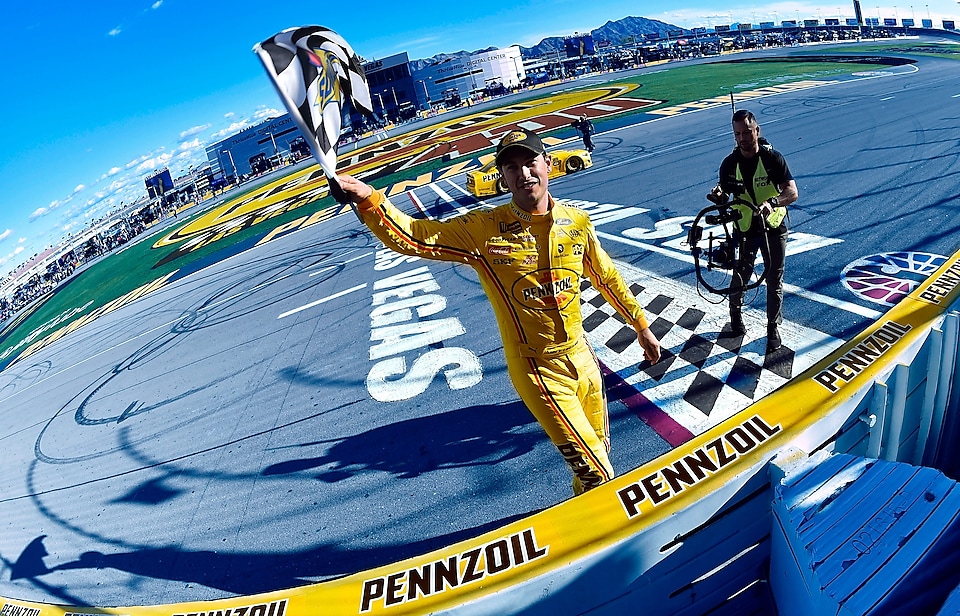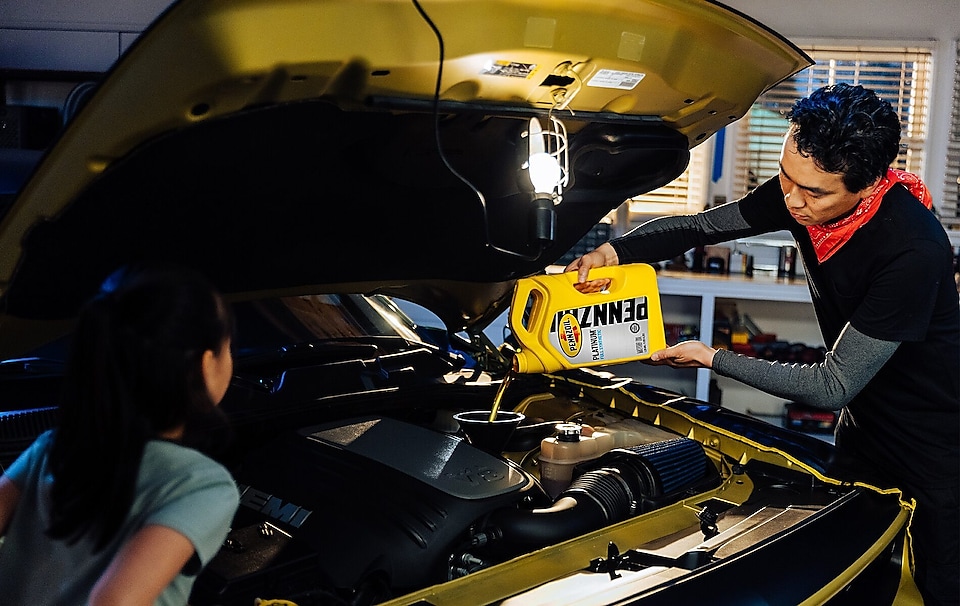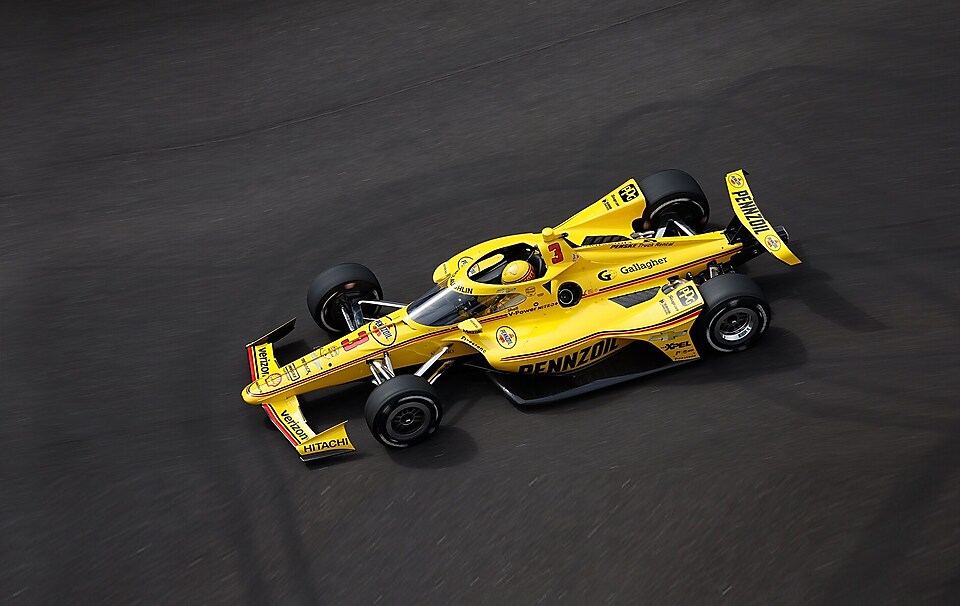
Q&A With Team Penske Engineer, Lauren Sullivan
From wind tunnel testing on airplanes to victory lane with Team Penske, Lauren Sullivan’s journey is a testament to her relentless pursuit of engineering excellence. Lauren's early work with NASCAR's Next Gen rollout, combined with her unique role in Penske's 2022 championship wins in both NASCAR and IndyCar, showcases her undeniable impact on the track.
Lauren's story isn't just about racing; it's about passion, dedication, and the relentless pursuit of excellence, which is why Pennzoil sat down with her to learn more about her inspiring journey.
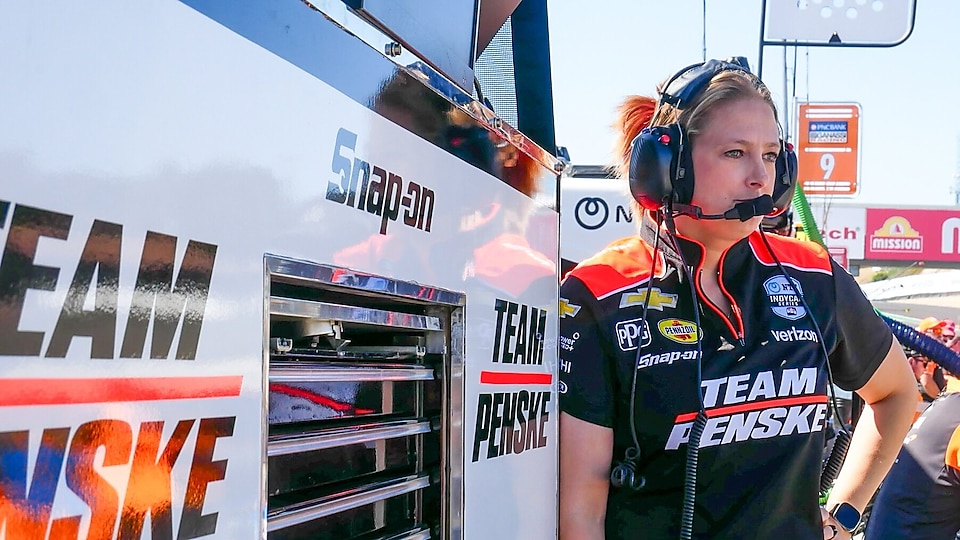
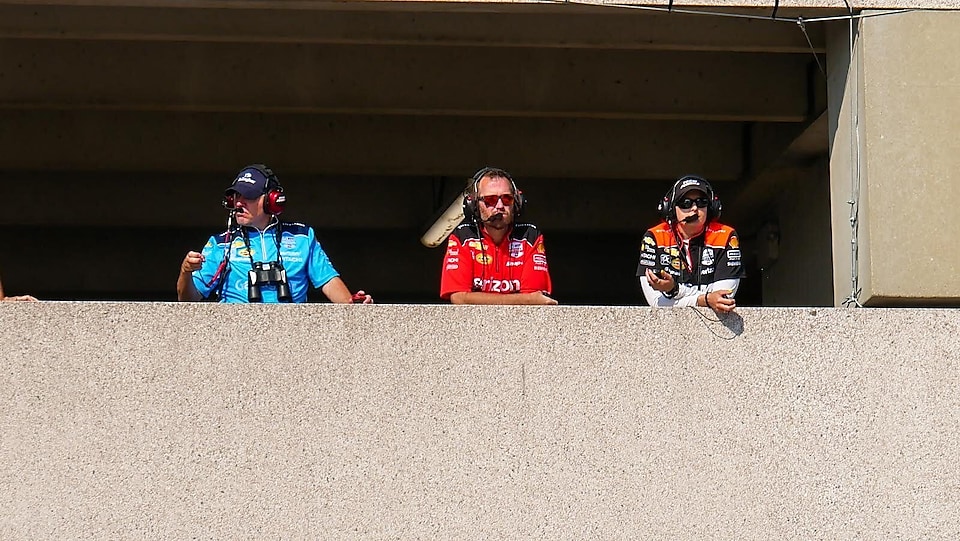
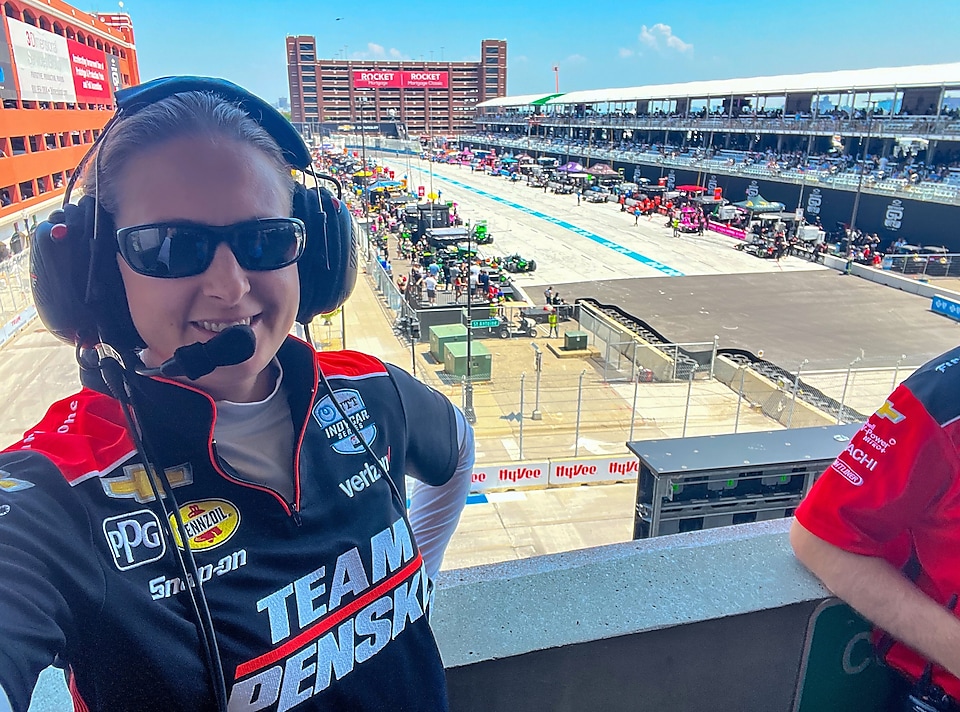
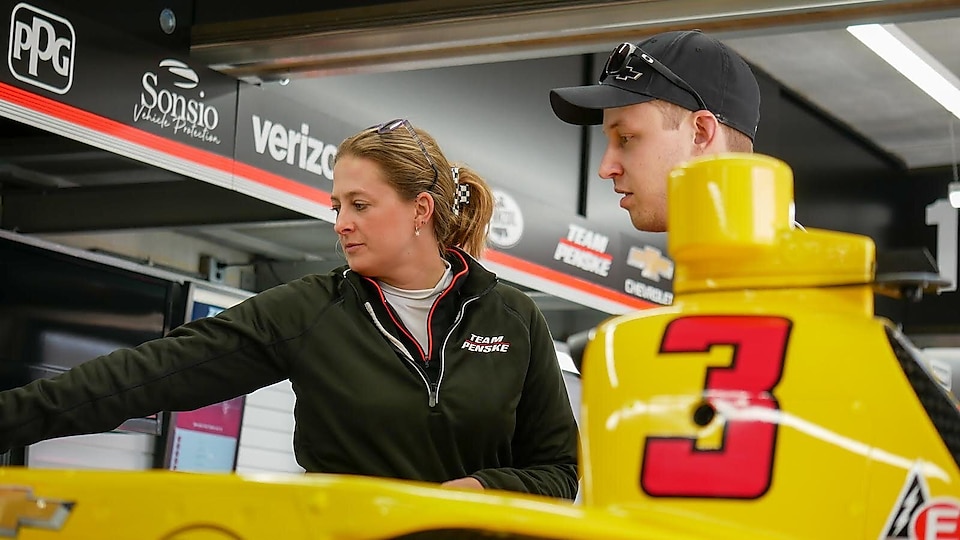
PENNZOIL: When did you first fall in love with engineering?
SULLIVAN: When I was in 7th grade, we were tasked to construct a bridge using a single 8 1/2 by 11 sheet of paper where the span between the supports was 12 inches. The catch was that we could not use glue, tape or scissors. I remember being so frustrated, but once my teacher, Jon Doyle, showed me how to think outside the box, I really enjoyed it. Although the answer wasn’t obvious, I could still find it by putting my mind to it and developing the right strategy. I later realized that problem-solving in this way had a name: engineering.
PENNZOIL: What about the world of IndyCar caught your attention and kindled your passion to be a part of it?
SULLIVAN: After almost five years in aerospace engineering with Boeing, I actually became bored with airplanes! I wanted to continue in my field but in a different industry, specifically in an engineering method called wind tunnel testing. I did some research and learned that race teams use that same testing, too. I got a job with Team Penske’s NASCAR team as an engineer, where my childhood hobby could combine with my education to be a career. After six years with Penske in NASCAR, I was asked to support an Indy 500 race as an engineer and, although I wasn’t as familiar with IndyCar, I absolutely loved the experience and an unexpected passion was ignited.
PENNZOIL: What do you love most about being an engineer in the fast-paced world of motorsports?
SULLIVAN: I love the rapid innovation and quick implementation in the racing industry compared to the aerospace industry. Within the first couple of months that I joined Team Penske at NASCAR, a design I developed for our NASCAR cars was already on the track. The sport is very fast, no pun intended!
LAUREN SULLIVAN WITH WIND TUNNEL PROJECTS THROUGHOUT HER LIFE, BEGINNING IN 5TH GRADE
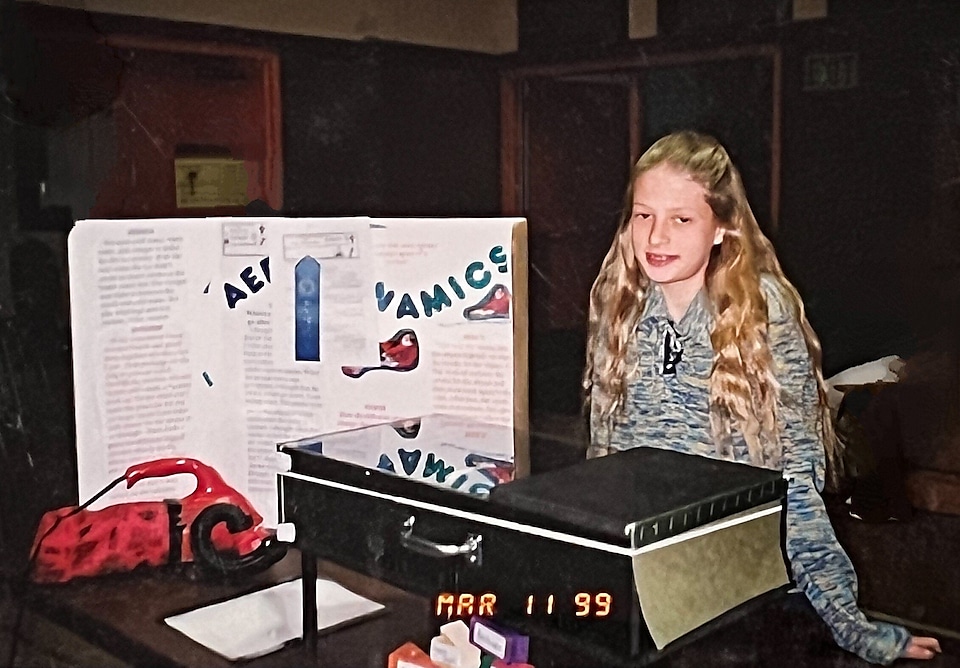
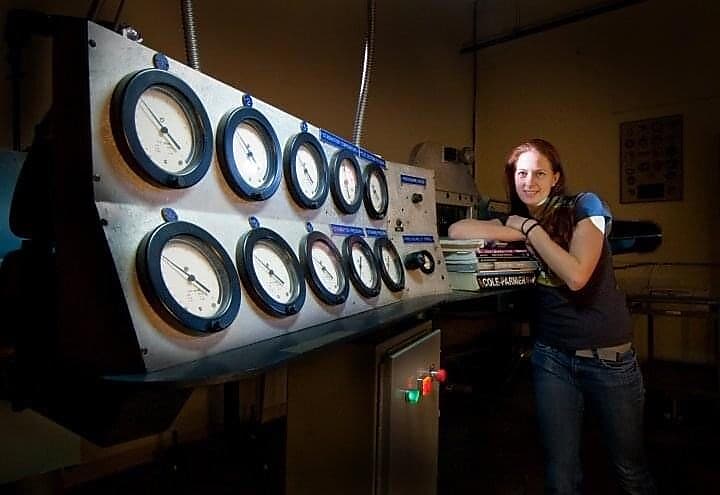
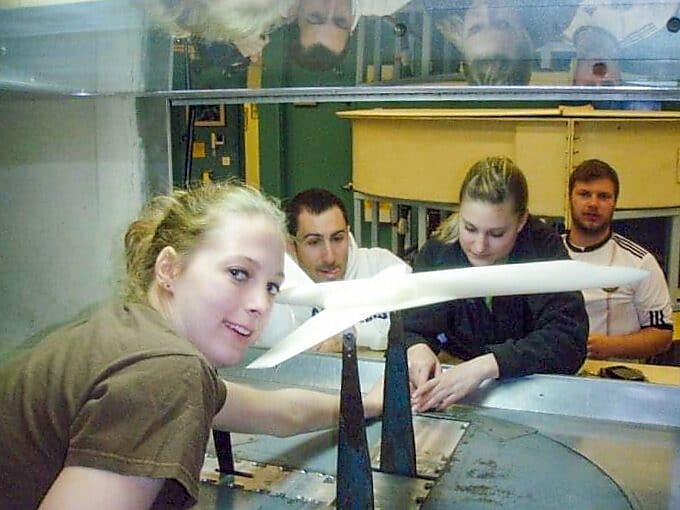
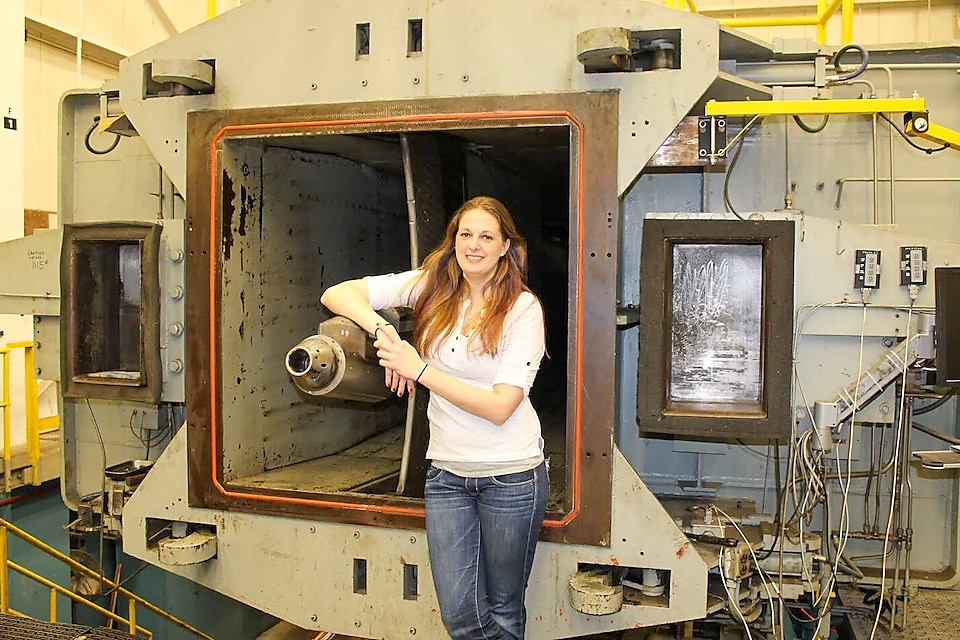
PENNZOIL: What were the biggest challenges early in your career?
SULLIVAN: In the early stages of my engineering career, I struggled with confidence in myself and my ability. Being a woman in the field, I hesitated to ask questions out of fear of appearing less knowledgeable. I resorted to finding the answer on my own, which lengthened my learning curve and only made it harder for me to do my job. I realized I was listening to a lie, a lie that told me I was expected to know less because I was a woman. I was expected to know less, but it was because I was new, not because I was a woman. I wish I would have accepted that truth sooner as asking questions has helped me master new concepts quickly later in my career.
The transition from Boeing to NASCAR was also a big technical challenge. But I soon realized that at a basic level, aircraft and racecars are the same. They’re both lifting bodies with aerodynamic forces at play, just in opposite directions.
PENNZOIL: Can you share any key drivers—people, experiences, or inspirations—that have shaped your journey in this field?
SULLIVAN: I was always a NASCAR girl; I was part of my family’s NASCAR super late model team at Irwindale Speedway in Southern California when I was young. Our team was actually sponsored by Pennzoil! Being on the track there with my dad, combined with my mom’s support of any passion I pursued, were huge factors in my journey.
Middle school STEM activities that I mentioned earlier really began to pique my interest in engineering. Once I was in college studying aerospace engineering, my professor Dr. Mark McQuilling helped me secure my first internship, where I initially fell in love with wind tunnel testing.
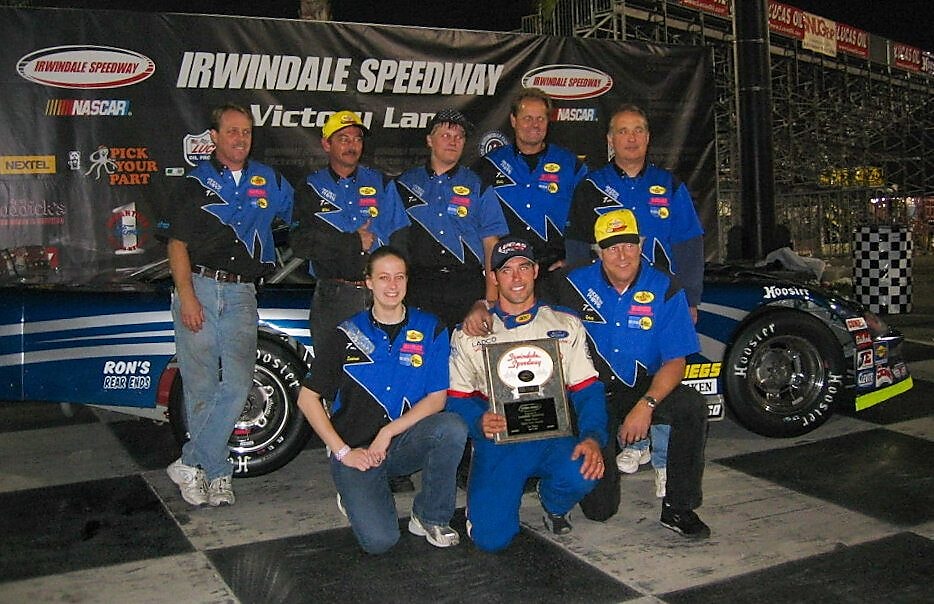
SULLIVAN (BOTTOM LEFT) AND HER FAMILY’S PENNZOIL-SPONSORED SUPER LATE MODEL TEAM
PENNZOIL: What do you think are the biggest technical differences between working on IndyCars and other race cars?
SULLIVAN: I love how IndyCars are designed to go fast, even faster than a Boeing 737 at take-off. Unlike other series with secondary goals like NASCAR's emphasis on staying stock, IndyCar is all about optimization for speed. Each component is crafted for peak performance. Thanks to a wealth of data and sensors, we can quickly identify and address any issues a driver might face. It’s such an advanced way of racing.
PENNZOIL: Walk us through what a day in your life is like on a race weekend.
SULLIVAN: Each event is unique, but on a typical race weekend, it’s right down to business. Everyone from engineers to mechanics to truck drivers works to set up, especially on road and street courses without garages. Once we're settled, my focus shifts to preparing for the next event as they are frequently back-to-back; I’m creating schedules, coordinating team travel movements, and distributing incoming information from the series, vendors, and team management. I usually get interrupted by immediate needs for the current event, such as addressing any issues with travel and handling last-minute requests.
When I'm not knee-deep in logistics, I sometimes get to spot for Josef Newgarden. Being a spotter is thrilling; I get to be his second set of eyes so that he can focus on the track in front of him. Lucky for me, these two jobs don't clash! After the race, I'm right back into the logistics swing, updating schedules and ironing out any travel kinks, especially when we’re hopping on commercial flights.
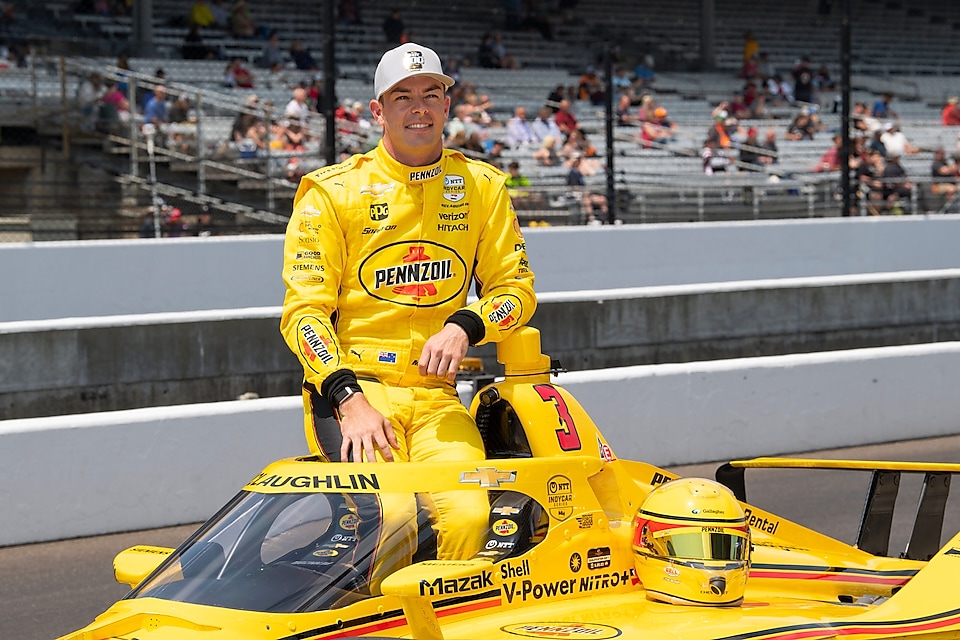
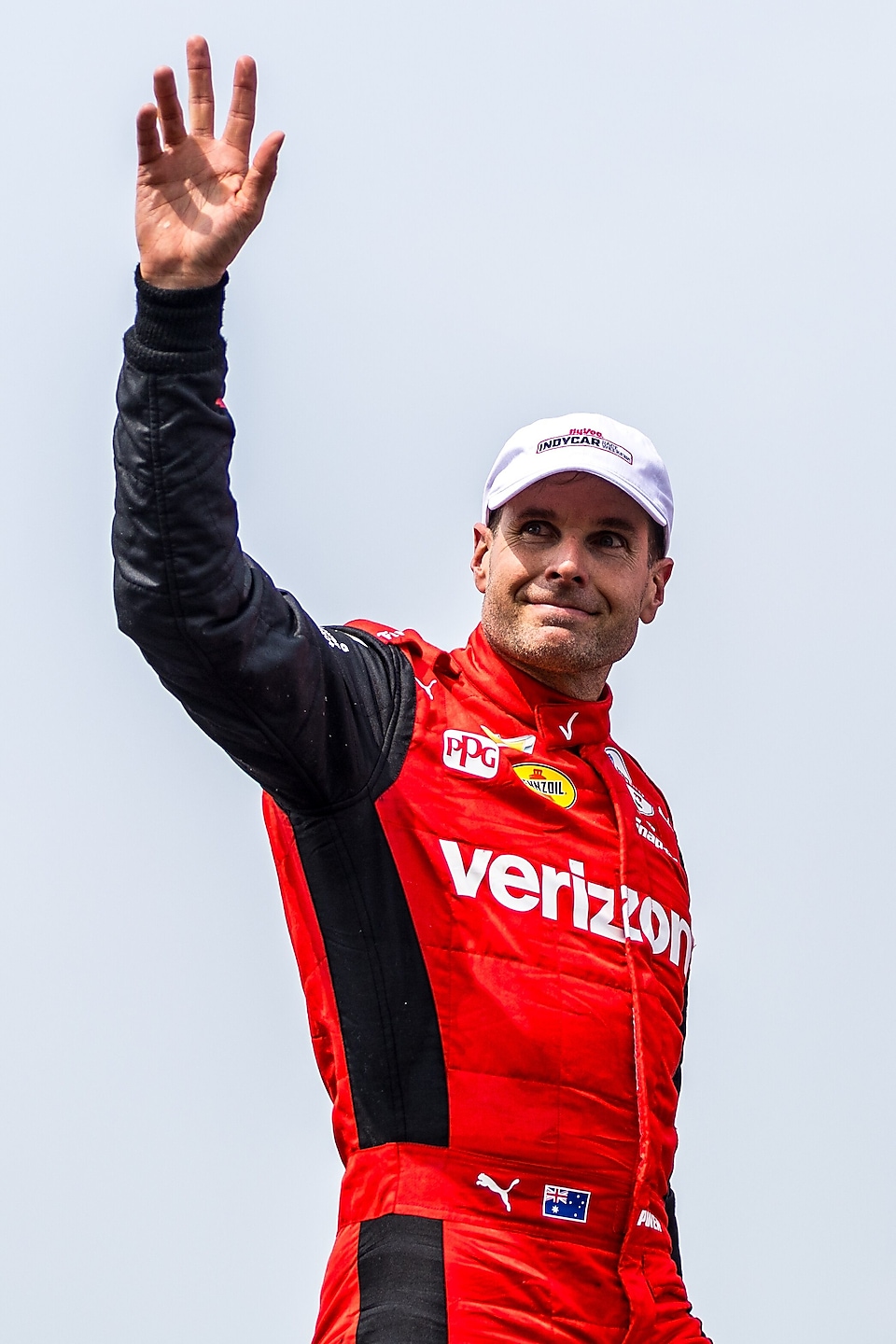
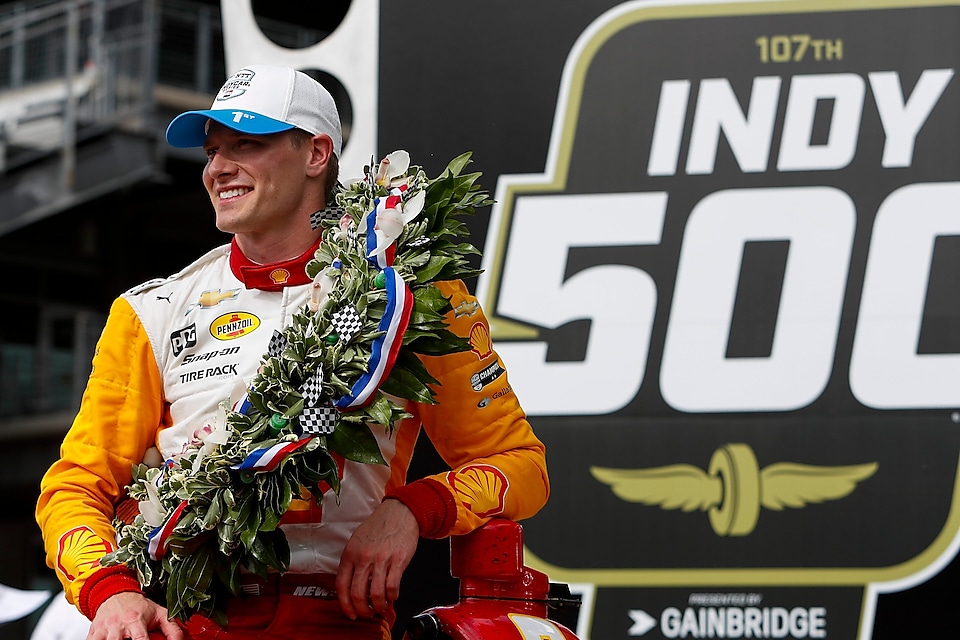
PENNZOIL: Being a part of Team Penske must be exhilarating. Can you share with us a memorable race day experience that encapsulates the thrill of pit lane?
SULLIVAN: I’d say that clinching two championships in both NASCAR and IndyCar last year was a pretty impressive feat. I led a lot of the wind tunnel testing for the Next Gen rollout before I left NASCAR; so even though I had moved on by the time Joey Logano clinched his win, the groundwork I laid played a small part in his success.
Josef’s Indy500 win this year was probably my favorite in the past couple of seasons. From a coordinator’s perspective, though, that race was one of the toughest. I worked till 11 PM the night we won, coordinating team arrangements for an extra day’s stay to celebrate. It was hectic ensuring that everyone's plans were in order, but I loved every moment of it.
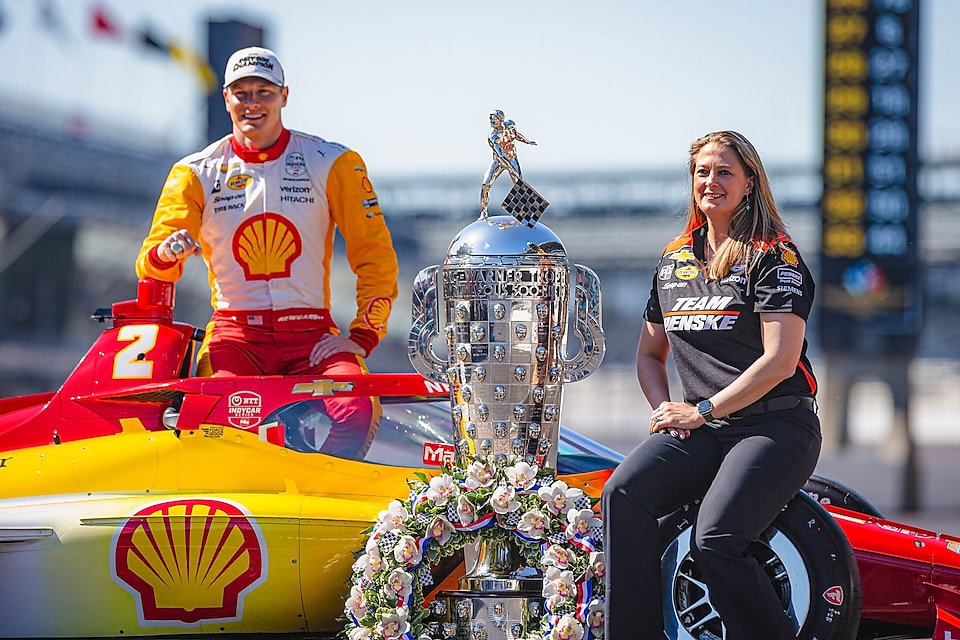
LAUREN SULLIVAN CELEBRATING JOSEF NEWGARDEN’S 2023 INDY500 VICTORY
PENNZOIL: Can you shed light on how sponsor partnerships, such as Pennzoil’s, fuel the IndyCar team's engineering efforts?
SULLIVAN: Having a sponsor like Pennzoil is so valuable for Team Penske. It's central to our track performance. It's not just about lubrication; it's about the science and the chemistry that affects everything from friction to how our machines run. With Pennzoil pushing the limits, and staying ahead of the curve, we're in good hands. They ensure we get the best, which allows us to focus our energy on the other engineering challenges of the car.
PENNZOIL: You're doing some incredible work volunteering to talk about STEAM (Science, Technology, Engineering, Art and Math) at different schools. What ignited this passion?
SULLIVAN: I've always been big on outreach in everything I do. Looking back, I had many resources but lacked a consistent engineering path. There weren't opportunities like robotics or STEM activities in my high school, so I didn't truly explore engineering until college. When I go into schools for an event, students get to be hands-on and build a model racecar. They have to work inside a budget and incorporate engineering, so they can see what it’s really like. I want to give young people a word for what they are passionate about, so they can continue to chase it as they want to.
PENNZOIL: What have been your favorite moments working with students in the STEAM program?
SULLIVAN: My top highlights are always the lasting relationships I build through the program. I have kept in touch with a 7th grader for several years, and since our meeting, she's joined a STEM-heavy high school academy and begun her own engineering journey. It’s so rewarding to hear from past students I worked with who are now on a motorsport engineering path of their own.
Speaking at my high school assembly was a standout moment for me. Initially, one student was visibly disinterested and made a rude comment. But as I shared my journey, I saw a spark ignite in him, and by the end, he was engaged and even asked questions. It's these moments and connections that fuel my passion. It emphasizes the reality that if we don't make an intentional effort to show these students what opportunities are available, how will they ever know?
LAUREN SULLIVAN AT A STEAM EVENT IN A HIGH SCHOOL
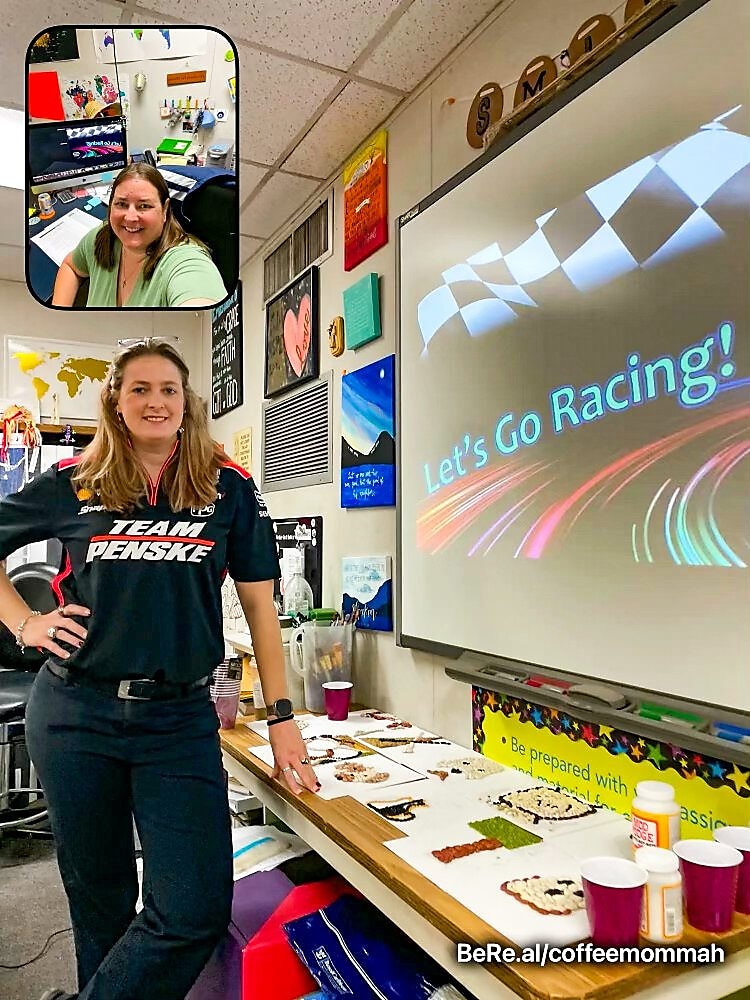
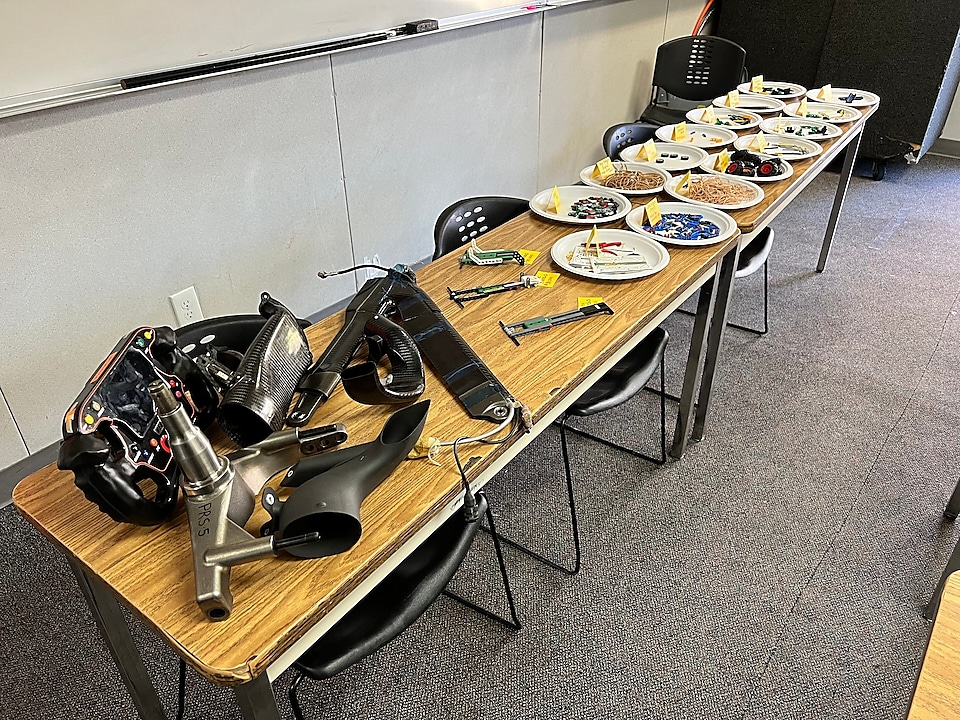
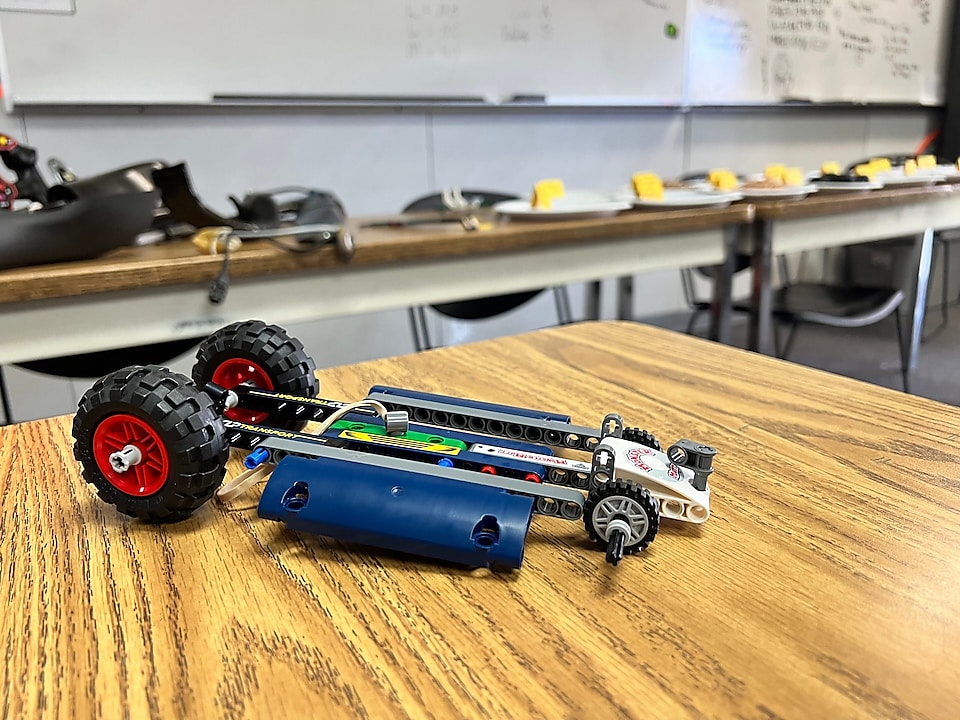
PENNZOIL: What advice would you give a young woman who aspires to become an engineer in motorsports like yourself?
SULLIVAN: You are more than simply welcome here, you are wanted here. I often hear people tell women to simply ‘be more confident,” but that puts the cart before the horse. Confidence tends to come with experience. While it’s important for women to know that they are no better and no worse than their male colleagues due to their gender, I think more women need to realize there is actually a seat waiting for them, they just need to take a seat! They will quickly realize they are surrounded by people who not only want to see them succeed but will help them succeed. And that's when the confidence starts.
PENNZOIL: Pennzoil’s campaign, Long May We Drive, is about powering exhilarating miles for every driver. What does Long May We Drive mean to you?
SULLIVAN: Long May We Drive signifies a passion for forward-thinking. In order to drive for a long time, like this campaign suggests, you need reliable technology under the hood. With Pennzoil, it’s evident that they are committed to the drive – one that is technically advanced, and always improving. Knowing that such innovation powers the engine gives drivers the peace of mind to focus on their adventures.
PENNZOIL: So, when you’re in need of an oil change, what do you use?
SULLIVAN: Anytime I find myself with the need for oil on the road, I reach for Pennzoil because I know it’s reliable and I know what it can do, whether in a racecar or my daily driver.
Don't miss Lauren Sullivan's exciting journey with Team Penske's IndyCar team as the racing season unfolds. Stay in the loop on every race by following Team Penske on Instagram and X!
